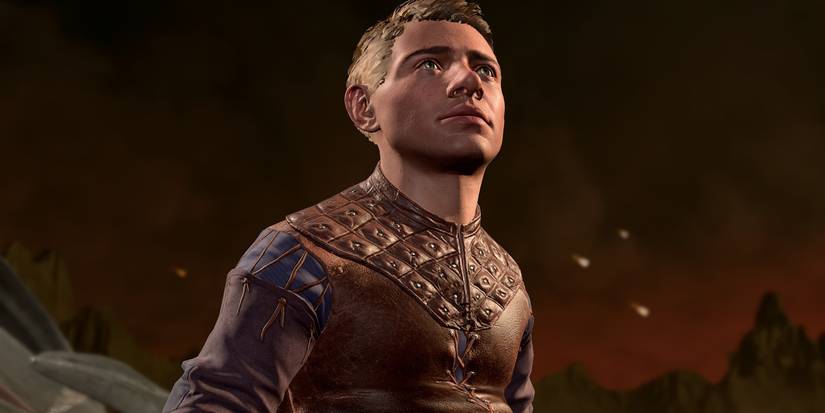There are 11 races in Baldur’s Gate 3 with 28 unique subraces collectively. When making a custom character, your choice of race is arguably the most important. You can always change your class, name, gender, and general appearance, but you’re never able to change your race.
This is also one of the biggest factors in how NPCs will immediately perceive you. Some races have a lot more reactivity than others, so if you’re looking to get fully immersed in your next campaign, here are a few pointers for creating your future Tav.
Human
It’s likely no surprise to see humans at the bottom of this list. There’s a lot you can do to make a human character interesting, especially in DnD, but Baldur’s Gate 3 doesn’t really take the human race anywhere special.
You can’t really blame the developers for this, though. In a fantasy setting, humans are the blankest of slates, and there’s nothing particularly compelling story-wise that makes humans an appealing choice.
Halfling
Halflings get very little unique dialogue, but most of what they do receive is very reminiscent of the race’s original inspiration and has a strong personality. Their interactions are either about loving food, partying or trying their best to make peace in a friendly manner.
My favorite piece of halfling interaction has to be when interacting with Dashkent Moliver in Fraygo’s Flophouse during the “Investigate the Temple Murders” quest. If the party has discovered the clue about the murderer being a dwarf wearing red, they can call him out for fitting the description, just to find out that he is, in fact, a halfling.
Doing this as a halfling yourself is absolutely hilarious, as he’ll be completely stumped as to how you failed to recognize your own kin.
Elf
There’s surprisingly not an awful number of unique interactions when it comes to Elves, but similarly to halflings, they come with a distinct personality. This generally consists of comments about your fey ancestry, long life span, or arrogantly looking down on other races.
Half-Elf
There are a few moments where other characters will comment on your ancestry as a half-elf, which makes them a little bit more interesting to play than their elven parents.
You’ll still get access to a lot of elf-specific dialogue if you choose high or wood elf parentage, but the half-drow subrace brings down the race as a whole, since it basically presents a slightly worse version of the drow when it comes to roleplay.
For example, when playing as a half-drow, you’ll receive a lot of flak from characters who assume you to be a regular drow, but you still won’t be able to do things like walk through the goblin camp with ease, which removes a lot of the appeal of choosing the lineage.
Dragonborn
Dragonborn get a fair number of unique interactions, though they are starved for conversation with other members of their own race until briefly in Act Three, unless you save Alfira as the Dark Urge.
They have a handful of possible conversations with characters who have never seen a dragonborn in their life, which can provide a comfortable middle ground between the outright alien githyanki and the other races. Lae’zel also has some extra dialogue if you choose to romance her as a dragonborn,
Dwarf
Dwarves have a few unique moments, particularly if you’re playing as a duergar. The other two subraces are quite average, but Duergar particularly shine in the Underdark. Most Duergar dialogue is cruel and sadistic, making them one of the best choices for an evil campaign or a Dark Urge character.
Half-Orc
Half-Orc characters have a lot of potential for role-playing concepts, and I personally love playing them as gentle giants, but it can be a little tricky to get immersed when you’re playing as one.
None of the custom character voices really fit the stereotypical tone that an orc or half-orc would carry, which is a little frustrating if you don’t want to play a character that’s a subversion of expectations – especially considering that the majority of race-specific dialogue for half-orcs is intimidation checks.
If you’re looking for dialogue that has the typical orcish vibe, then you’ll probably benefit from taking some levels in barbarian.
Gnome
Gnomes are quite underwhelming in the later game of Baldur’s Gate 3, but they get quite a lot of dialogue in the first act. Although, positive interactions are notably a little few and far between.
If you’ve never played a gnome before, you’ll likely have no idea that they have some excellent reactivity with the goblins, even if it is just constant threats of being put in the same position as Barcus – it definitely gives you a more personal reason to clear out the goblin camp.
It’s also fun to play as a gnome when interacting with Astarion, as he doesn’t shy away from expressing his distaste for the race.
With that being said, gnomes are quite decent as protagonists outside of race-specific dialogue. Their racial passive “gnome cunning” grants them advantage on intelligence, wisdom, and charisma saving throws, which can be extremely useful for passing checks or gathering information.
Tiefling
Tieflings have always been a very flavorful race, and this remains true throughout Baldur’s Gate 3. You get lots of unique dialogue within the grove, and can add some extra commentary when dealing with devils like Raphael and Mizora.
The tiefling race is an especially good pick if you’re romancing Astarion, as you’ll be able to read the Infernal writing on his back, which is a much better outcome than him having to honor a deal with Raphael.
Githyanki
The githyanki race has some of the best reactivity in the game, and will often be provided with more than one option for race-specific dialogue.
Larian’s decision to include the race alongside the ten standard options from the Player’s Handbook was a great choice, as there are several moments where a githyanki character can provide an interesting perspective on a conversation, being the only playable race that won’t have the player originate from Baldur’s Gate or the Underdark.
However, there’s one place where playing as a Githyanki falls short, which prevents it from taking the number one spot. Unless you have Lae’zel as your protagonist, it’s quite easy to get overshadowed by her. Even if you’re a gith yourself, the game treats Lae’zel as the githyanki character, and she’ll often provide information that you theoretically should know already.
This can work if you decide to flavor your character as an outcast to gith society, but then this slightly undermines the appeal of playing as an alien race at all. Lae’zel does seem to benefit from having another githyanki in the party, though, and will warm up to you a little bit quicker.
Source link



























Add Comment